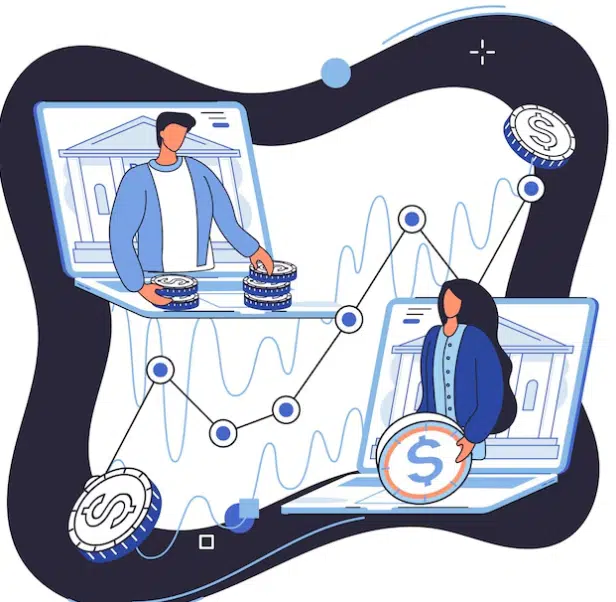The landscape of personal credit in the United States is evolving rapidly, driven by technological advancements and shifting consumer expectations. This transformation brings a wave of exciting trends and innovations that promise to reshape how individuals access and manage loans. As personal credit continues to develop, what’s emerging in the US loan market will impact how consumers interact with financial institutions and redefine the borrowing experience. To stay ahead, it’s crucial to explore these groundbreaking developments and understand their potential benefits and challenges.
From AI-driven lending models to alternative credit assessment methods, financial institutions are leveraging technology to offer more personalized and inclusive borrowing experiences. The rise of fintech companies and digital banking solutions has introduced greater accessibility, allowing consumers to apply for loans with streamlined approval processes and lower barriers to entry. Meanwhile, regulatory changes and shifts in economic conditions are influencing interest rates and borrowing behaviors, shaping a dynamic environment where adaptability is key.
Technological advancements in personal credit
Technological innovation is at the forefront of transforming the loan sector, making it more accessible and user-friendly. With the rise of financial technology companies, traditional banks are being pushed to rethink their approaches. Automation and digital platforms are streamlining processes, allowing borrowers to apply for loans with minimum fuss. Consumers can now access their personal credit information faster than ever, thanks to user-friendly mobile apps and online portals designed to deliver financial insights at their fingertips.
In addition to speeding up the application process, technology has also introduced greater transparency. Borrowers can now compare offers from various lenders, ensuring they make informed decisions. This increased access to information promotes healthy competition among financial providers, leading to better rates and more flexible loan terms. Savvy customers benefit from this competitive environment, which drives innovation and enhances the overall consumer experience.
Moreover, the adoption of artificial intelligence (AI) is revolutionizing credit assessments. Traditional credit scoring systems are being complemented or replaced by AI-driven models that analyze a broader set of data points. These advanced algorithms enable more accurate risk assessments, allowing lenders to offer personalized financial solutions to individuals who may have been overlooked by traditional methods.
Big data and analytics in lending
The use of big data and analytics in personal credit represents a significant leap forward. By analyzing vast amounts of information, lenders can better understand consumer behaviors and preferences. This data-driven approach enhances the accuracy of risk assessments, allowing for improved lending decisions and potentially lowering lending costs.
Big data helps lenders identify patterns and trends that might not be evident through traditional methods. For instance, analyzing spending habits, payment histories, and even social media activity can offer insights into a borrower’s financial responsibility. This holistic view of a consumer’s financial life provides lenders with the tools to tailor their offerings more precisely, meeting the needs of individual borrowers.
Blockchain technology in credit
Blockchain technology is another promising development impacting the future of personal credit. Known for its decentralized and secure nature, blockchain offers a new way to manage consumer lending efficiently. By storing credit histories and transaction records on a distributed ledger, blockchain ensures that data is tamper-proof and securely accessible to authorized parties.
This technology can significantly reduce the potential for fraud and errors in the lending process since entries on a blockchain are immutable and transparent. Additionally, it simplifies identity verification and streamlines document management, reducing time-consuming and costly paperwork. These advantages facilitate faster loan approvals and enhance the borrower experience.
Changing consumer expectations
Alongside technological innovations, shifting consumer expectations are driving changes in the way personal credit is delivered and managed. Modern borrowers seek convenience and control over their financial matters, which has prompted lenders to prioritize customer-centric solutions. This shift is pushing financial institutions to innovate and focus on user experience.
Younger generations, who are digital natives, expect seamless, omnichannel experiences when interacting with financial products. They value instant access to information and the ability to manage their credit autonomously. In response, lenders are integrating capabilities such as real-time notifications and easy payment options into their offerings, creating customer loyalty and long-term engagement.
Financial education and literacy
Financial literacy is a crucial component in the evolving personal credit landscape. As products become more sophisticated, ensuring that consumers can make informed financial decisions is increasingly important. Lenders are stepping up their efforts to provide educational resources and tools aimed at improving financial literacy among borrowers.
Interactive platforms and educational apps are emerging as primary channels for delivering this vital financial education. These tools empower consumers to understand their credit scores, budget effectively, and explore the implications of financial decisions. Increased financial awareness allows individuals to take control of their credit health, reducing the likelihood of over-indebtedness and promoting financial well-being.





